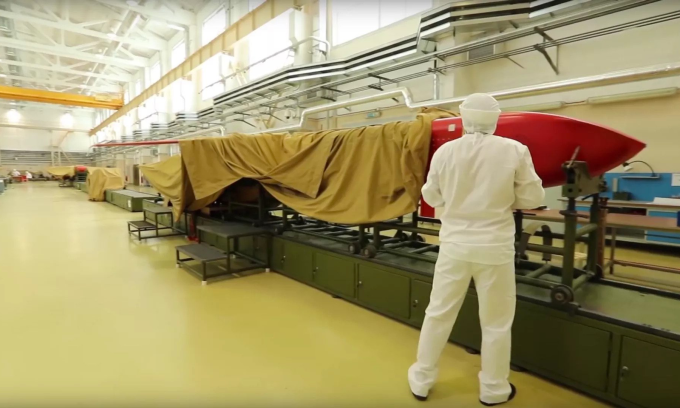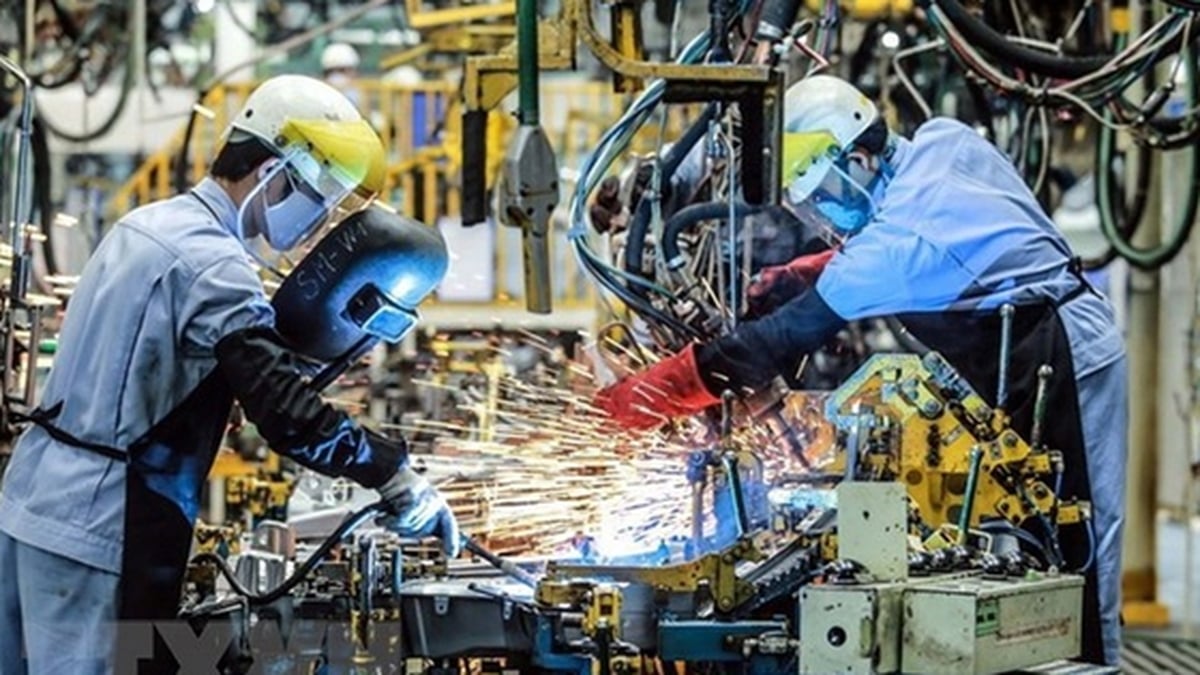The nuclear-powered Burevestnik super missile can help Russia attack any target in the world , but also poses many environmental risks.
President Vladimir Putin announced on October 5 that Russia had successfully tested the Burevestnik super cruise missile carrying a nuclear warhead, equipped with a small atomic engine that gives it "global range".
Mr. Putin did not disclose the time and location of the successful test of the Burevestnik missile, but based on satellite images and aviation data, experts believe it was conducted recently at the Pankovo test site in the Novaya Zemlya archipelago in the Arctic Ocean, where the Soviet Union and Russia once conducted nuclear weapons tests.
Burevestnik, NATO codename SSC-X-9 Skyfall, is one of six super weapons announced by Mr. Putin in his federal message in March 2018, but this is the first time Russia has announced the successful test of this type of cruise missile.
US media reported that Russia conducted at least 13 tests of the Burevestnik missile between 2017 and 2019, but all failed. The explosion at the Nyonoksa test site in Russia's Arkhangelsk region that killed seven people, including five scientists , in August 2019 is believed to have been a failed test of the Burevestnik missile.
According to the Moscow-based newspaper Izvestia , Russia decided to develop the Burevestnik missile in December 2001, after the US withdrew from the Anti-Ballistic Missile (ABM) Treaty signed by both sides in 1972.
The weapon was developed by the defense company NPO Novator in collaboration with the All-Russian Scientific Research Institute of Experimental Physics (VNIIEF), now part of the Rosatom corporation.

Burevestnik missile in a photo released on July 19, 2018. Photo: RIA Novosti
Images released by Russia show that Burevestnik has a similar shape to the Kh-101 missile line, but is much larger in size and weight, so it will likely be equipped on warships instead of Tu-160 and Tu-95MS bombers.
Some military experts believe that this super weapon can also be fired from self-propelled launchers like the MZKT-7930 to increase mobility.
According to military expert Thomas Newdick of Drive , the Burevestnik missile uses the principle of a ramjet engine, in which the projectile compresses a stream of air at very high speeds while flying, heats it with a small nuclear reactor inside, and uses this hot air to create thrust.
The nuclear reactor provides a virtually endless source of energy for the missile, allowing it to theoretically stay in the air indefinitely if its guidance systems and electronics are working properly. This is why the Russian president claims that the Burevestnik missile has "unlimited range."
However, in reality, the components on the rocket can only function well for a short time in harsh conditions, so Burevestnik cannot fly for too long, even with a nearly "never-ending" energy source.
According to the Russian military magazine VPK , Burevestnik has a theoretical maximum range of more than 20,000 km, allowing it to strike any target on the US mainland even if launched from any location in Russia. The missile flies at an altitude of 50-100 meters, much lower than traditional ballistic missiles, making it difficult to detect by air defense radar.
Miniaturizing complex equipment such as a nuclear reactor to fit on a missile is considered a breakthrough in Russian engineering. American physicist Jeff Terry said that to fit on the Burevestnik missile, the nuclear reactor must be small enough and have an operating capacity of about 766 kW, equivalent to new generation reactors, according to the Topwar news site.
Another unique feature of the Burevestnik is that it can continuously change direction while flying, creating unpredictable trajectories to avoid early warning and air defense systems at sea.
This is considered an important feature, especially when missiles are capable of "flying around the globe". Current missile defense systems are deployed in key directions, where enemy missiles are most likely to fly, to ensure effective interception while saving costs.
With an "unlimited" flight range, Burevestnik can theoretically fly around any defense complex and hit targets from the most unexpected directions, where the enemy has no protective shield.
Mr Putin said Burevestnik was capable of penetrating "all existing and future air defence systems", stressing that no country "possesses anything similar".
General Jim Hockenhull, former director of British Defense Intelligence, in 2020 assessed that the Burevestnik missile "reaches subsonic speeds, can reach any location in the world and strike from unexpected directions."
Graphical simulation of the capabilities of the Burevestnik missile. Video: RIA Novosti
A 2020 US Air Force report said that the introduction of the Burevestnik missile would give Russia a "unique weapon with intercontinental strike capabilities."
The US also carried out the Pluto project with the ambition to develop a similar nuclear-powered missile in the 1960s. Called the Supersonic Low Altitude Missile (SLAM), this weapon was expected to have a flight speed of Mach 3.5, equivalent to more than 4,300 km/h, operate at low altitude, and be capable of carrying a thermonuclear bomb.
However, the US canceled the Pluto project after successfully developing an intercontinental ballistic missile (ICBM), because it could not solve the risk of radioactive release from SLAM's nuclear reactor during testing.
The nuclear engine on the rocket, when heating the compressed air to create thrust, will release radiation into the environment through the exhaust stream, affecting everything in its path. This nuclear-fueled engine, when dropped during testing, will also cause massive radioactive contamination to the target area.
This is also the issue that experts are concerned about the Burevestnik missile. "The question is what kind of radioactive material will the missile emit as it flies and what will happen to the nuclear reactor, whatever it is, when the missile reaches its target," Newdick said.
Some reports said that after the explosion at the Nyonoksa test site in August 2019, officials in the city of Severodvinsk, about 50 kilometers away, reported detecting radiation levels higher than normal for about 40 minutes.
Although the Russian Defense Ministry later confirmed that no toxic chemicals were released into the environment after the explosion and that radiation levels in the air had returned to normal levels, people around the area rushed to buy iodine in the hope of reducing exposure.
Jeffrey Lewis, a nuclear weapons expert at the US-based Middlebury Institute of International Studies, called nuclear-powered missiles "environmentally disastrous", while military analyst John Pike said traditional ICBMs are "much simpler, cheaper and more effective" weapons.
Russia has not announced when the Burevestnik missile will be put into service or put into combat status. The US-based Nuclear Threat Initiative (NTI) said in 2019 that it would be delivered to the Russian military around 2029.
Experts say Russia's deployment of the Burevestnik missile could affect negotiations with the US on a deal to replace the New START nuclear arms control treaty, which expires in 2026. Moscow suspended its participation in the treaty in February, accusing Washington and its allies of not fully complying with the agreement.
Pham Giang (According to Reuters, Business Insider, Drive )
Source link





















































![[Maritime News] More than 80% of global container shipping capacity is in the hands of MSC and major shipping alliances](https://vphoto.vietnam.vn/thumb/402x226/vietnam/resource/IMAGE/2025/7/16/6b4d586c984b4cbf8c5680352b9eaeb0)













































Comment (0)